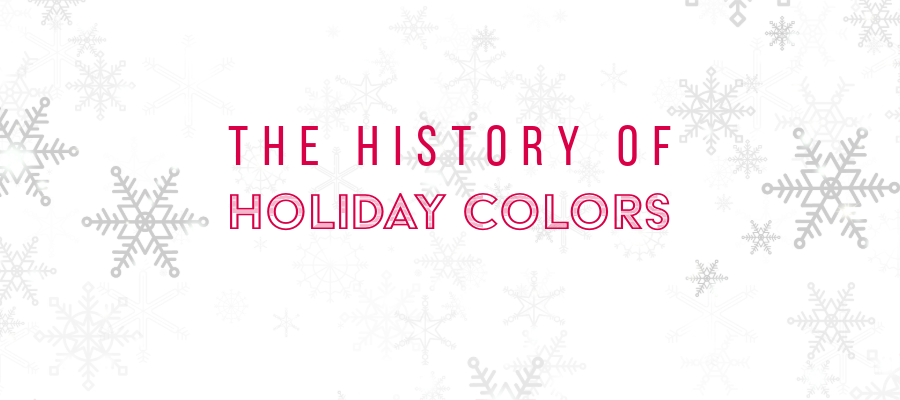
The History of Holiday Colors
When you think about the holiday season, distinct colors come to mind connected to the holiday you celebrate. However, how often do you stop to think about where these color associations came from? Why do we have such strong connections between these colors and our holiday traditions? We decided to learn the history and fun facts connected to December’s holiday colors.
Christmas: Red and Green
Red and green, representing Christmas, is a link that goes back centuries and doesn’t have one direct connection. The colors connect back as far as the celebration of the winter solstice and the Celtic tradition of decorating with holly plants. The holly plant is a small evergreen bush with red berries and spiky green leaves. For the Celts, this plant was believed to bring good fortune and was often used as decoration around the home. As a result, this tradition carried into other December celebrations such as Christmas. In the Christian religion, holly plants represent Christ. The red berries symbolize the blood of Christ, and the leaves the Crown of Thorns.
However, a more modern connection between these colors and Christmas is the depiction of Santa Claus. Pulled from various traditions, the depiction of the Santa we know today began with artist Thomas Nast, who created an illustration of Santa for the cover of Harper’s Weekly in 1863. However, according to Arielle Eckstut, co-author of The Secret Language of Color, this depiction of Santa really took off in 1931, thanks to Coca-Cola. The company hired artist Haddon Sundblom to create an illustration of Santa for their advertising campaigns. His artwork brought the image of a red and green, jolly Santa into the average household, therefore cementing these colors for Christmas into modern-day popular culture.
Hanukkah: Blue, White, and (sometimes) Silver
Blue and white are the primary colors associated with Hanukkah. These colors’ main ties to the holiday are through religious connections in the Jewish faith. For example, both colors appear in the tallit, or Jewish prayer shawl. Tallits are traditionally white with stripes of blue originally dyed with blue ink from a sea snail. This shade of blue (tekhelet) has theological connections to the Torah and is intended to serve as a reminder of God’s presence in Jewish religious practices. Furthermore, there are universal associations with these colors as well. White symbolizes purity and peace, and blue connects to faith, wisdom, and truth.
In addition to white and blue, silver is sometimes incorporated as a color in Hanukkah celebrations. This is believed to be due to the popularity of silver menorahs.
Kwanzaa: Red, Black, and Green
Three colors are associated with Kwanzaa: red, black, and green. Each color is connected to the seven candles (Mishumaa Saba) used in the celebration of Kwanzaa, with each color having a distinct symbolic meaning. Red symbolizes blood shed in the past. Black represents the people of African descent around the world. Lastly, green signifies the land of Africa itself. These colors are used in various decorations throughout this holiday season, including rich textiles and art objects.
Whatever your holiday traditions may be, I hope you’ll look at the colors surrounding you with a little more appreciation this year. As 2023 winds down, all of us at Design Pool want to wish you a happy holiday season and best wishes for the new year.
Share this post
Author
DESIGN/COLOR TRENDS AND AWESOME INFORMATION IN YOUR INBOX
Sign up for our monthly trend letter




